The UK has a long and interesting history with V8 engines, stretching back to the early days of the automobile. Even before famous brands like Rolls-Royce thought about putting a V8 engine in their cars, British engineers were already experimenting with this powerful engine design.
Over the years, British engine builders have crafted some of the most impressive and high-performing V8 engines the world has ever seen. These engines didn’t just power luxury cars; they also found their way into racing cars that competed at the highest levels around the globe.
Names like Cosworth and Ilmor are etched into racing history, known for creating V8 engines that pushed the limits of speed and performance.
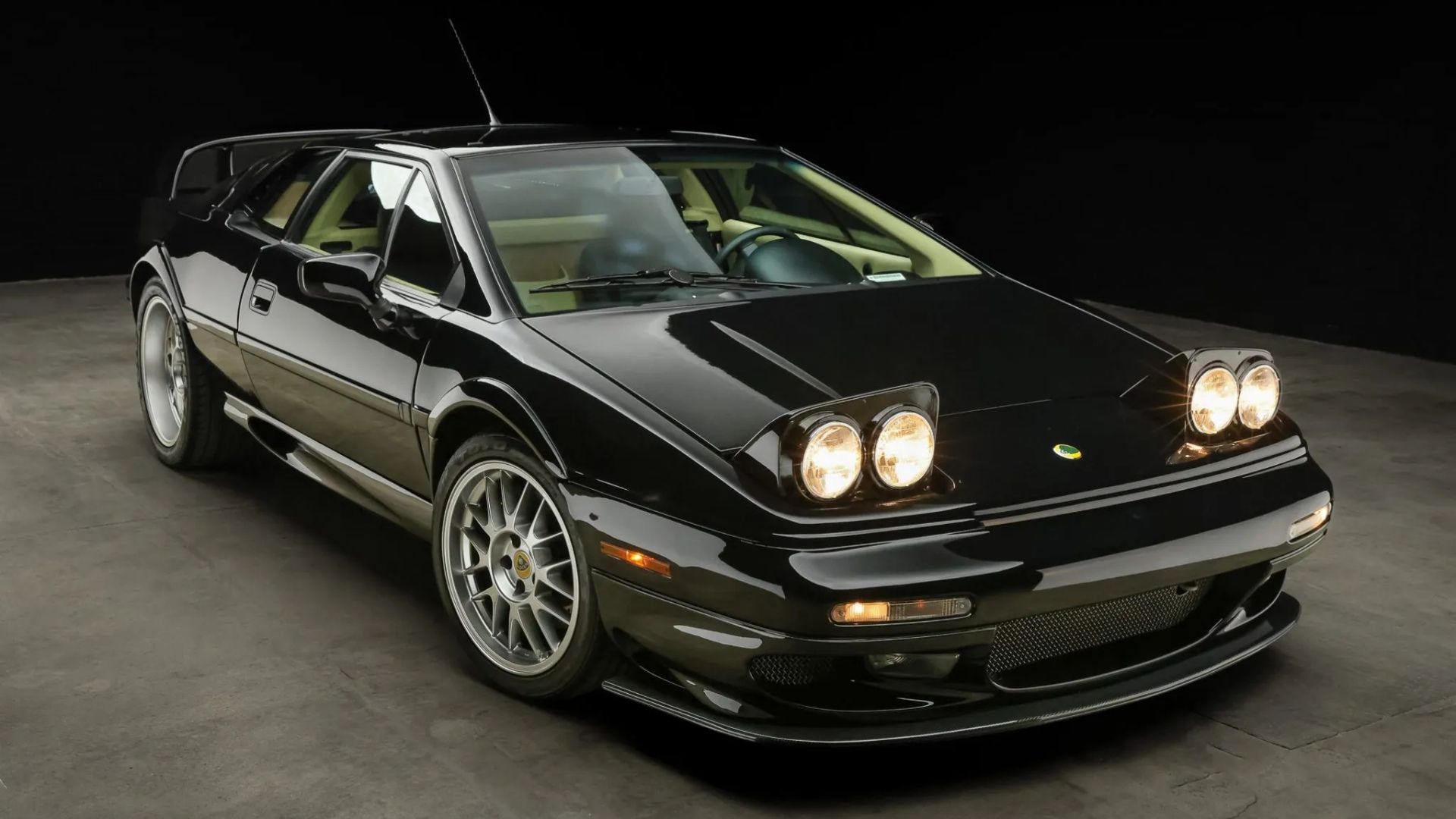
In addition to their history of creating large, powerful engines for luxury cars and racing vehicles, the British also have a rich tradition of building small, nimble sports cars.
These classic British sports cars are often admired for their lightweight design and quick handling. But what makes them even more interesting is that some of these small cars were powered by V8 engines, which are typically associated with much larger vehicles.
Fitting a V8 engine into a small sports car wasn’t always easy. In many cases, these engines had to be scaled down or specially designed to fit within the limited space of these smaller vehicles. Despite the challenges, British engineers managed to create some remarkable small V8 engines that delivered impressive power without compromising the car’s lightweight and agile nature.
This article looks at the history of these small V8 engines, focusing on those that came out of the United Kingdom. By examining the work of British engine builders throughout automotive history, we can see how they managed to produce V8 engines with the smallest displacements, all while maintaining the performance and reliability that these engines are known for.
The list that follows ranks these small British V8s in order from the highest displacement to the lowest, showing just how creative and skilled British engineers have been over the years in crafting engines that combine power with compact design.
10. Rover 3.9 V8: The Evolution of a British Engine Icon
The Rover 3.9-liter V8 engine is a significant chapter in the story of British automotive engineering. This engine has a displacement of 3,946cc (or 240.79 cubic inches) and was developed as an evolution of the earlier 3.5-liter V8 engine, which was known for its reliability and widespread use.
The key difference between the 3.9-liter V8 and its predecessor lies in its bore and stroke measurements. While it retained the same stroke as the 3.5-liter engine, the bore was increased to 3.7 inches, allowing for a larger displacement and slightly more power.
The engine produced 190 horsepower and 246 lb-ft of torque, making it a robust powerplant suitable for a wide range of vehicles.
Throughout the 1990s, the Rover 3.9 V8 became a workhorse in the automotive industry. It was used in a variety of vehicles, ranging from luxurious Range Rovers to sporty TVRs.
This versatility helped solidify the engine’s reputation as a reliable and powerful option for different types of cars. Whether in a rugged SUV or a nimble sports car, the Rover 3.9 V8 provided the necessary performance to meet the demands of drivers.

In 1995, Rover decided to make some enhancements to the 3.9-liter V8. The company added extra ribbing to the engine block to improve its structural rigidity, which helps in reducing engine vibrations and increasing durability. Additionally, Rover made revisions to the pistons, which are essential components that play a key role in the engine’s combustion process.
These improvements resulted in a slight increase in displacement by just one cubic centimeter (cc). To distinguish this updated engine from the previous version, Rover renamed it the “4.0” V8.
This rebranded 4.0 V8 continued to be used in various vehicles, maintaining the legacy of the original 3.9-liter engine. The Rover 3.9/4.0 V8 remained in production until 2003, marking 17 years of service across 15 different vehicle models. This longevity to the engine’s robust design and adaptability, making it one of the most enduring V8 engines in British automotive history.
the Rover 3.9-liter V8 engine represents a crucial evolution in British engineering, known for its reliability, power, and versatility.
Its journey from the original 3.5-liter design to the enhanced 4.0-liter version underscores Rover’s commitment to refining and improving its engines, ensuring they could meet the needs of a diverse range of vehicles for nearly two decades.
9. McLaren M838T: The Powerhouse Behind McLaren’s Supercar Revival
The McLaren M838T is a 3.8-liter twin-turbo V8 engine that played a pivotal role in the rebirth of McLaren as a standalone automotive manufacturer. With a displacement of 3,799cc (231.82 cubic inches), this engine was developed in collaboration with Ricardo plc, a renowned engineering firm, to power McLaren’s first production car since it became an independent company—the MP4-12C. This engine marked McLaren’s return to building road cars, establishing a new era for the brand.
The M838T engine features a bore and stroke of 3.66 inches and 2.75 inches, respectively. It is capable of producing an impressive 592 horsepower and 443 lb-ft of torque.
This potent combination of power and torque makes the M838T one of the most formidable engines in its class, enabling McLaren’s cars to deliver exhilarating performance on the road and track.
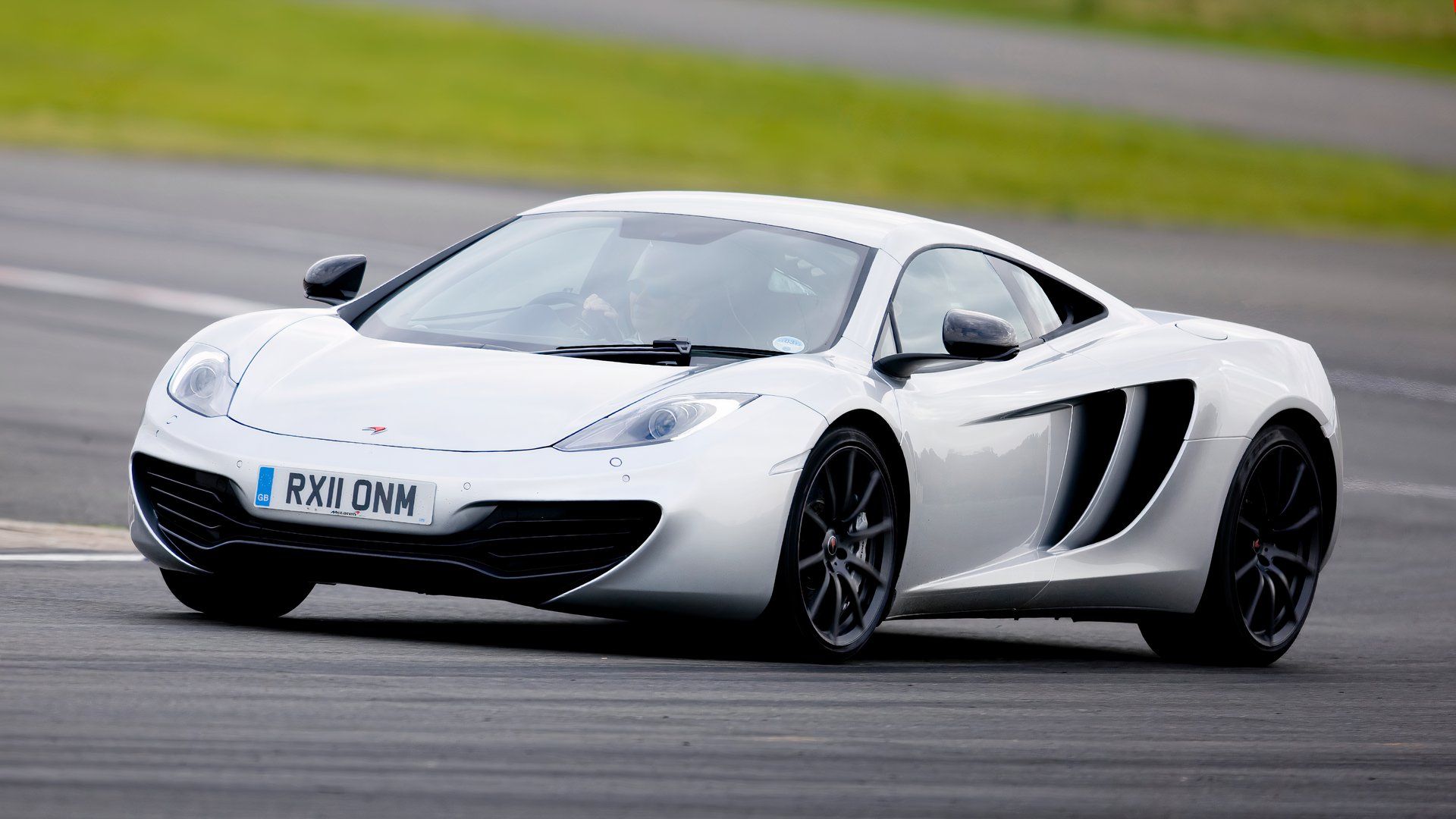
One of the standout features of the M838T is its twin-turbocharging system, which was developed using turbochargers from Mitsubishi. These turbochargers play a critical role in boosting the engine’s power output by forcing more air into the combustion chamber, allowing for more fuel to be burned and thus producing more power. This turbocharged setup gives the engine its distinctive high-revving character and remarkable acceleration capabilities.
The McLaren M838T was not just a one-off engine but became the foundation for many of McLaren’s supercars over the next decade. It powered several models, including the iconic McLaren P1, which was one of the first supercars to incorporate hybrid technology.
In the P1, the M838T was paired with an electric motor, creating a combined output of nearly 1,000 horsepower and 774 lb-ft of torque. The addition of electrification provided a significant boost in performance, particularly in terms of torque, with nearly 200 lb-ft available instantly from a standstill.
This made the P1 not only fast but also extremely responsive, especially in lower-speed scenarios.
The engine was assembled at Ricardo’s dedicated facility, ensuring that each unit met McLaren’s exacting standards for performance and reliability.
Over time, the M838T was adapted and refined to meet the evolving demands of McLaren’s expanding lineup, including more track-focused and higher-performance variants.
The McLaren M838T engine is true to McLaren’s engineering prowess and its partnership with Ricardo. This engine not only powered the company’s resurgence as a top-tier supercar manufacturer but also set the stage for future innovations, such as hybrid technology in high-performance vehicles.
The M838T’s blend of power, efficiency, and versatility solidified McLaren’s reputation as a leader in the segment of supercars.
8. Rover 4.0 V8: The Versatile British Engine Powering Iconic Cars
The Rover 4.0 V8 engine has an interesting history and evolution. Originally, it started as the Rover 3.9 V8, but in 1995, Rover decided to rebrand and update it slightly, calling it the Rover 4.0 V8.
Despite the name change, the engine’s displacement—meaning the total volume of all the engine’s cylinders—remained nearly the same at 3,947cc or roughly 240.8 cubic inches.
The slight variation of just 1cc between 3.9 and 4.0 was due to improvements in the engine’s block rigidity and piston design. This means that the engine was made a bit stronger and more durable, but these changes didn’t drastically alter its size.
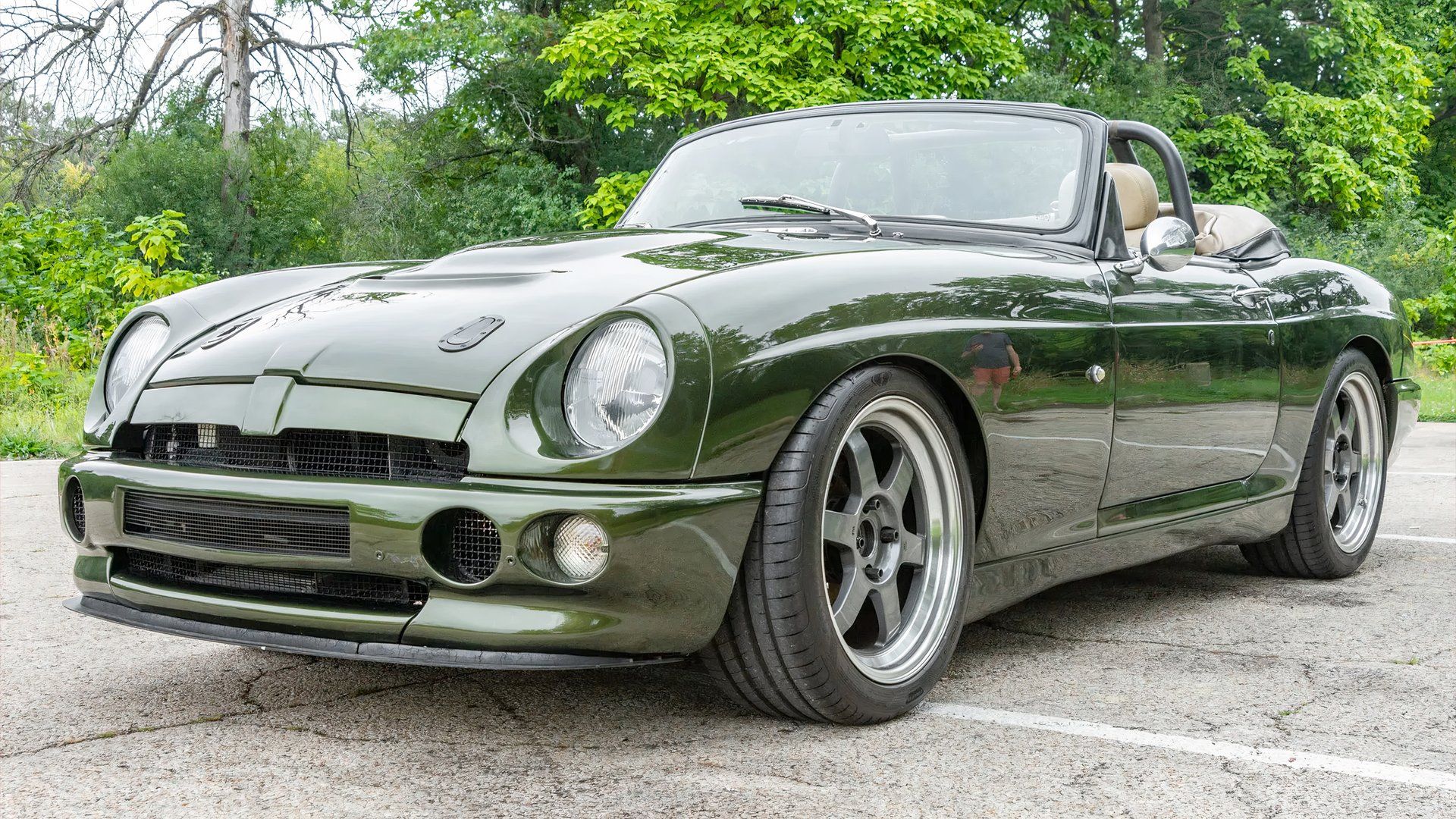
The Rover 4.0 V8 is a type of engine known for its “V” shape, where the cylinders are arranged in two banks set at an angle to each other.
This particular engine has a bore (the diameter of each cylinder) of 3.7 inches and a stroke (how far the piston moves up and down within the cylinder) of 2.8 inches. These dimensions contribute to how the engine breathes and performs. In terms of power, the Rover 4.0 V8 produces 190 horsepower and 246 lb-ft of torque.
Torque is a measure of the engine’s pulling power, which is particularly important for vehicles like trucks and SUVs that need to haul heavy loads or tackle rough terrain.
During its production run, the Rover 4.0 V8 wasn’t just confined to Rover’s own vehicles. At the time, Rover was supplying engines to several smaller British car manufacturers.
As a result, this engine found its way into some pretty exotic and rare sports cars. Notable examples include the Marcos Mantara, a sleek and sporty vehicle that combined British craftsmanship with unique styling, and the Morgan Plus 8, a classic roadster known for its vintage charm and powerful performance.
Rover also used this engine in its own MG RV8, a modernized version of the classic MG roadster. The engine was versatile and reliable, which is why it was a popular choice for various British automakers.
The Rover 4.0 V8’s final appearance was in the 2004 Land Rover Defender, a rugged off-road vehicle that has become an icon of British engineering. The Defender’s need for a tough, dependable engine made the Rover 4.0 V8 a natural fit.
The Rover 4.0 V8 is a great achievement for British engineering, representing a balance between power and practicality, and it played a significant role in some of the most iconic vehicles of its time.
7. Jaguar AJ28 3.5: The Engine That Redefined Jaguar’s Lineup
The Jaguar AJ28 3.5 is a 3.6-liter V8 engine with a displacement of 3,555cc (216.93 cubic inches), marking a significant chapter in Jaguar’s engineering history. Introduced in 1997, this engine was part of the AJ-V8 family, the fourth engine series that Jaguar ever developed.
The AJ28 3.5 was designed to replace two of Jaguar’s most iconic engines: the straight-six AJ6 engine and the legendary Jaguar V12. As such, it played a crucial role in modernizing Jaguar’s powertrains during a period of significant change for the brand.
With a bore of 3.39 inches and a stroke of 3.01 inches, the AJ28 3.5 V8 was capable of producing 262 horsepower and 254 lb-ft of torque.
These figures positioned it as a powerful yet efficient option for Jaguar’s luxury cars, offering a balance of performance and refinement that was well-suited to the brand’s image. The engine provided enough power to deliver a spirited driving experience, while also being smooth and quiet enough to maintain the luxury feel that Jaguar was known for.
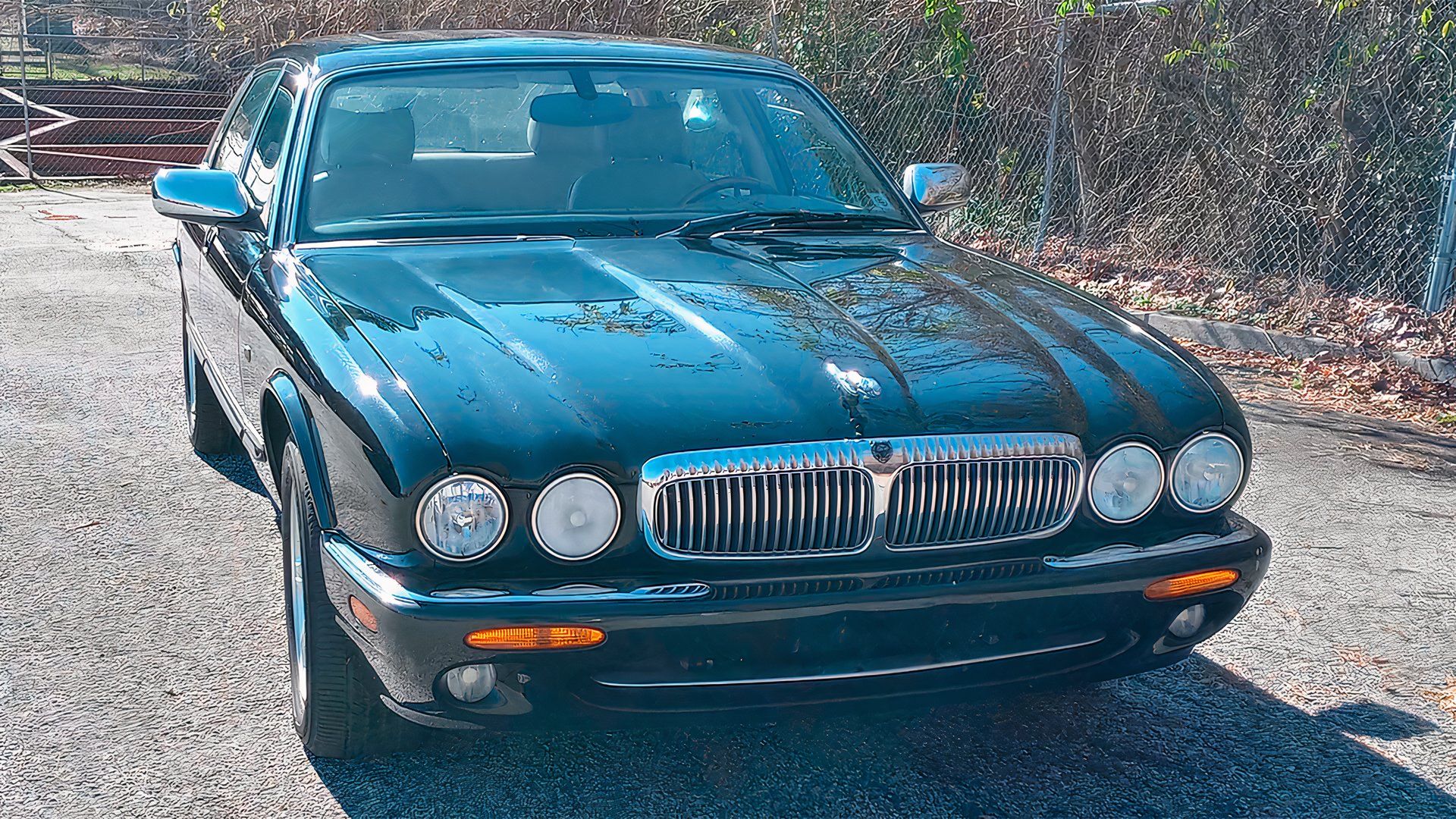
One of the innovative features of the AJ28 engine was its use of Nikasil-coated cylinders. Nikasil, a nickel-silicon alloy, was chosen for its ability to reduce friction and improve the durability of the engine’s cylinders. This was a cutting-edge technology at the time, aimed at enhancing the engine’s performance and longevity.
However, the Nikasil coating proved to be problematic in real-world use. The coating had a tendency to flake off, particularly in markets where high-sulfur fuel was common. This flaking led to premature engine failures, causing significant issues for Jaguar and its customers.
In response to these problems, Jaguar revised the AJ28 engine design to use more traditional cast-iron liners instead of the Nikasil coating. This change improved the engine’s reliability and ensured that it could meet the high standards expected of a Jaguar.
Despite the initial setbacks, the AJ28 engine remained a central part of Jaguar’s lineup, powering various models until the early 2000s.
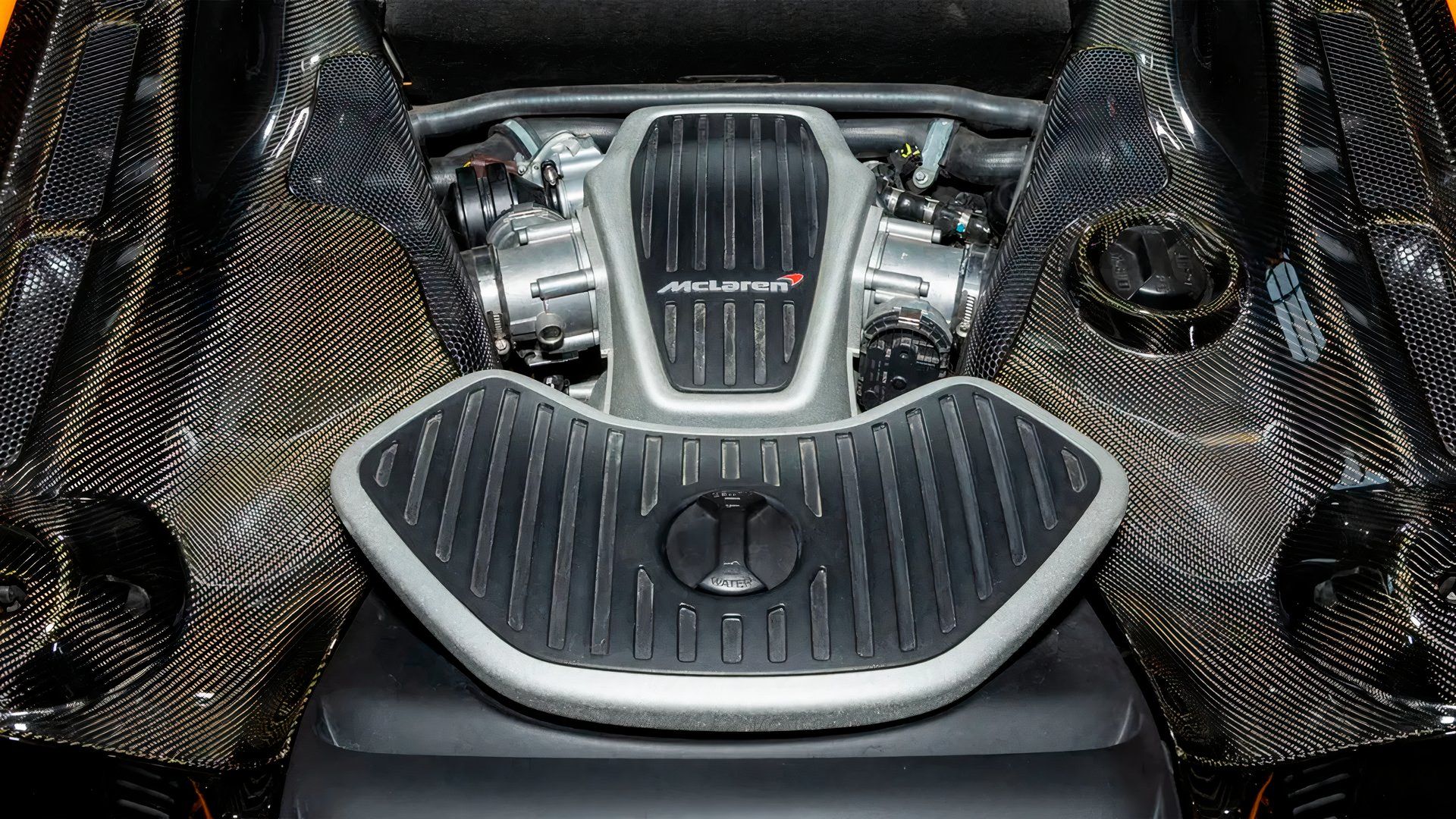
The AJ28 3.5 was not just a single engine but part of a larger family of AJ-V8 engines that included several variants. One such variant was the 3.2-liter version, which offered a slightly smaller displacement but shared many of the same design principles and technologies as the 3.5-liter engine.
These engines were crucial in helping Jaguar transition into a new era, where advanced engineering and modern technology became as important as the brand’s storied heritage.
The Jaguar AJ28 3.5 engine represents a pivotal moment in Jaguar’s history, as the company sought to update its powertrain offerings and compete with other luxury automakers on a global scale.
Despite some early challenges with the Nikasil coating, the AJ28 family proved to be a versatile and reliable engine series that helped Jaguar maintain its reputation for producing high-performance, luxurious vehicles.
6. The 1905 Rolls-Royce V-8: A Pioneering Engine in Automotive History
The 1905 Rolls-Royce V-8 is a fascinating piece of automotive history, representing one of the earliest attempts to create a V8 engine for a car. This engine, with a displacement of 3,535cc (215.71 cubic inches), was an ambitious project for Rolls-Royce at the time. It was developed during an era when the automobile industry was still in its infancy, and many manufacturers were experimenting with different types of engines and vehicle designs.
The Rolls-Royce V-8 was specifically designed to compete against the electric cars of the early 20th century. At that time, electric vehicles were popular for their quiet operation and smooth performance, particularly in luxurious town cars.
Rolls-Royce wanted to offer a gasoline-powered alternative that could match or exceed the performance and refinement of electric cars. To achieve this, they developed the 3.5-liter V8 engine, which was a significant departure from the simpler, smaller engines that were more common at the time.
One of the most interesting aspects of this engine was its side-valve design, which was a common engine configuration during that period. However, what set it apart was its use of a pressurized lubrication system.
Most engines of that era relied on a drip-feed lubrication system, which was less effective and required more frequent maintenance. The pressurized system in the Rolls-Royce V-8 was a more advanced solution, helping to ensure better engine performance and longevity.
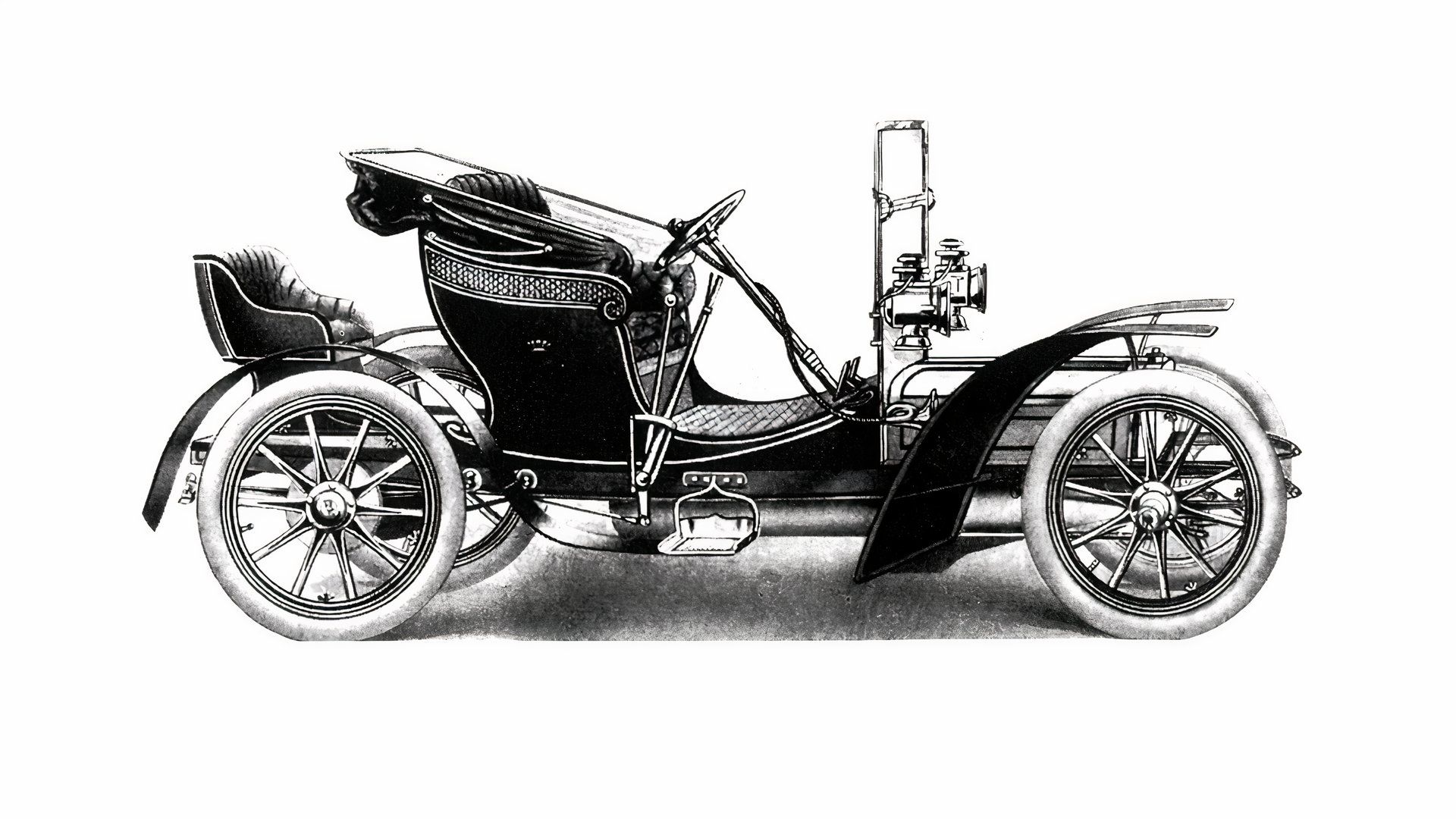
The V8 engine was used in two specific models: the Landaulette Par Excellence and the Legalimit. The Landaulette Par Excellence was a luxurious town car aimed at the high-end market, offering an opulent ride with a cutting-edge V8 engine.
The Legalimit, on the other hand, was named for its speed governor, which limited the car to the legal speed limit of 20 mph, even though the engine was capable of pushing the car to 26 mph. This was a safety feature designed to comply with the speed regulations of the time.
Despite its innovative design, the Rolls-Royce V-8 did not achieve commercial success. Only three of these engines were ever built, and just one car was delivered to a customer.
Interestingly, that car was later reacquired by the Rolls-Royce factory, and unfortunately, none of the original cars or engines have survived to the present day. This makes the 1905 Rolls-Royce V-8 a rare and significant part of automotive history, as it represents the first known attempt to use a V8 engine in a production car.
The 1905 Rolls-Royce V-8 was a groundbreaking engine that showcased Rolls-Royce’s early commitment to innovation and engineering excellence. Although it did not have a lasting impact on the market, it remains an important milestone in the history of the V8 engine and the development of luxury automobiles.
This engine helped pave the way for future advancements in automotive technology, solidifying Rolls-Royce’s reputation as a leader in the industry.
5. The Legendary Rover 3.5 V8: A British Icon of Versatility
The Rover 3.5-liter V8 engine is one of the most iconic and widely used engines in British automotive history. Its story began in 1967 and continued for nearly four decades until 2006.
This engine became so popular and versatile that it seemed as though nearly every V8-powered car built in England at one point used the Rover 3.5 V8. Its influence was vast, extending across various types of vehicles, from luxury cars to military applications.
Originally, the Rover 3.5 V8 was derived from an American design—the Buick 215 V8—before Rover acquired the rights to produce and develop it further. The engine started its life with a displacement of 3,528cc (215.53 cubic inches).
It was a relatively compact and lightweight engine, which made it an ideal choice for a wide range of vehicles. Its design featured a pushrod overhead valve (OHV) layout with two valves per cylinder, a straightforward configuration that contributed to its reliability and ease of maintenance.
The simplicity and durability of the Rover 3.5 V8 made it particularly appealing for both commercial and military use. It was easy to repair and service, which was a significant advantage in demanding environments where reliability was critical.
The engine’s robust construction and adaptable nature allowed it to be used in a variety of vehicles, from Land Rovers to sports cars like the Morgan Plus 8 and even in some specialized racing cars.
Over its long production run, the Rover 3.5 V8 saw several variants and improvements. For instance, a minor change in the build increased its displacement by four cubic centimeters, bringing it to 3,532cc.
Despite these updates, the core characteristics of the engine remained largely the same, with a focus on delivering solid performance, durability, and ease of use. The engine produced 190 horsepower and 220 lb-ft of torque, providing ample power for the vehicles it powered.

Interestingly, Rover even experimented with a diesel version of this V8 for the North American market, though this variant never made it to production. Despite this, the gasoline-powered versions of the Rover 3.5 V8 continued to be used widely, especially in off-road vehicles and other applications where its reliability and power were highly valued.
The legacy of the Rover 3.5 V8 is one of adaptability and widespread influence. Its long production life and extensive use across different vehicle types speak to its success as a power plant.
Even after its production ended in 2006, the Rover 3.5 V8 remains a beloved engine among enthusiasts, known for its distinctive rumble and the pivotal role it played in British automotive history.
4. The Evolution of the Rover 3.5 V8: From American Roots to British Icon
The Rover 3.5-liter V8 engine has a fascinating history, beginning its journey in 1967 and continuing to leave its mark on British automotive culture for nearly 40 years. This engine first appeared in the Rover P5B, a classic British cruiser that needed an upgrade from the 3.0-liter straight-six engine it was using at the time.
The introduction of the 3.5-liter V8 not only gave the P5B a new lease on life but also set the stage for this engine to become a cornerstone in various Rover vehicles and British sports cars.
The story of the Rover 3.5 V8 actually begins across the Atlantic in the United States. The engine was originally known as the Buick Fireball 215, an all-aluminum V8 developed by Buick in the early 1960s.
Although it was innovative for its lightweight construction, the Buick 215 had a reputation for being unreliable, especially due to issues like overheating and engine block failure. As a result, Buick discontinued the engine after only a few years of production.
However, Rover saw potential in this lightweight V8 and purchased the rights to the design. The company made several crucial modifications to make the engine suitable for the British market. One of the most significant changes was the addition of pressed-in iron cylinder liners.
This adaptation improved the engine’s durability and helped address some of the reliability issues that had plagued the original Buick version. These changes allowed the engine to thrive in various environments, from the urban streets of Britain to rugged off-road adventures.
The versatility of the Rover 3.5 V8 was one of its most remarkable features. It wasn’t just limited to large luxury cruisers like the Rover P5B. The engine also found its way into a wide range of vehicles, including the Rover 3500, SUVs like the Land Rover Range Rover, and even some low-volume British sports cars produced by manufacturers such as TVR and Marcos. This adaptability made the Rover 3.5 V8 a popular choice among carmakers and enthusiasts alike.
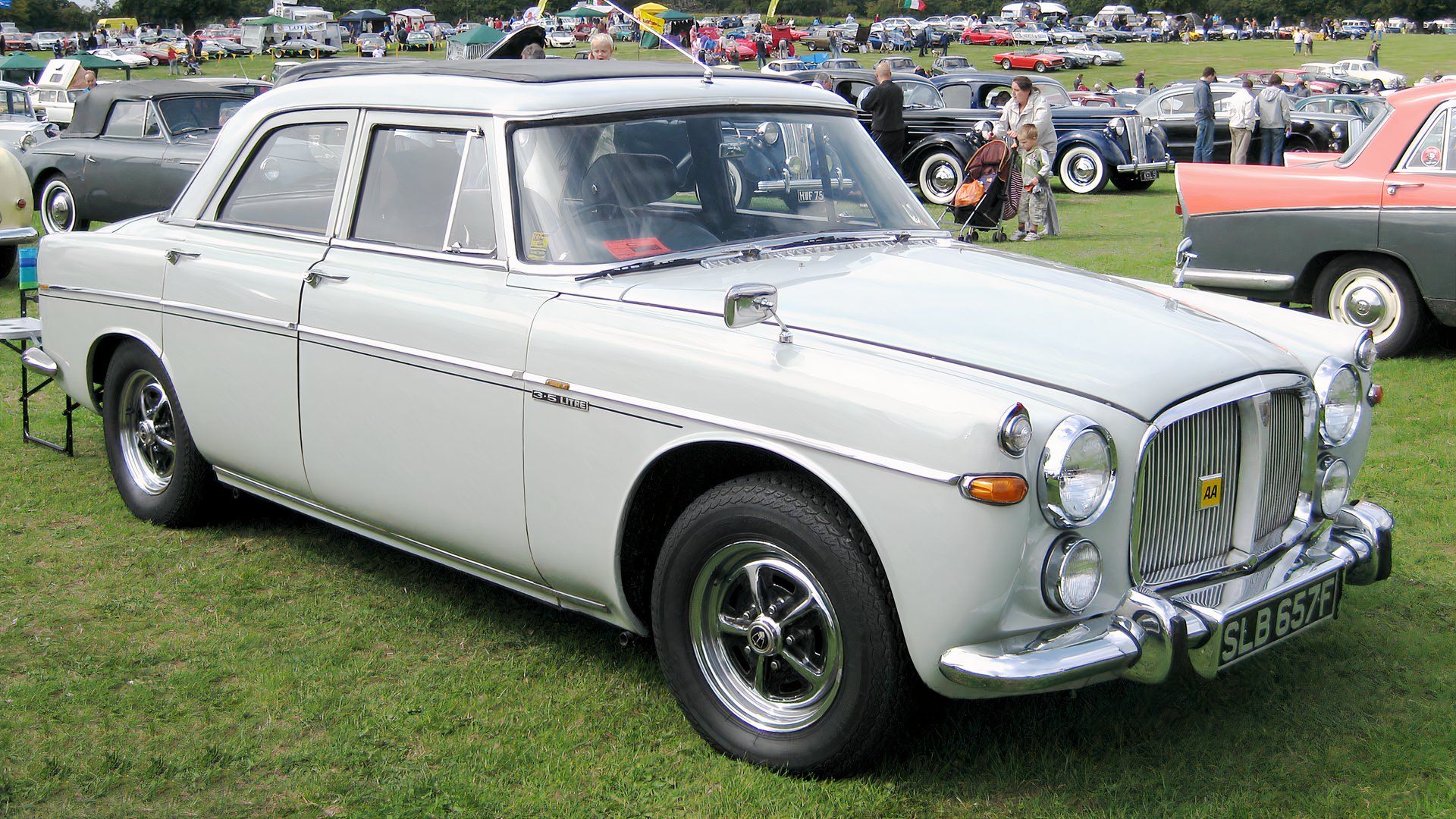
Throughout its production run, the Rover 3.5 V8 produced around 190 horsepower and 220 lb-ft of torque, respectable figures for its time. Its power output made it suitable for a variety of applications, whether it was providing the smooth, effortless cruising experience of a luxury sedan or delivering the robust, off-road capability of an SUV.
The Rover 3.5-liter V8 engine’s longevity and widespread use are to Rover’s successful adaptation of an American design into something that became quintessentially British. Despite its origins, the Rover 3.5 V8 grew to become a beloved engine, cherished for its reliability, versatility, and the unique character it brought to the vehicles it powered.
Even though production eventually ceased in 2006, the Rover 3.5 V8 remains a significant part of British automotive history, remembered fondly by enthusiasts and collectors.
3. Lotus Type 918: A Turbocharged Legacy in the Esprit
The Lotus Type 918 V8 engine, introduced in 1996, marks a significant chapter in the history of the Lotus Esprit sports car. Known for its earlier models featuring impressive turbocharged four-cylinder engines, the Esprit made a notable leap when it adopted the 918 V8. This engine was used in the fourth series of the Esprit, known as the S4, and continued to power the model until 2004.
The Type 918 V8 was a 3.5-liter engine, which means it had a displacement of 3,506 cc. This all-aluminum V8 was equipped with two Garrett turbochargers, enhancing its performance by forcing more air into the engine.
Despite its advanced turbocharging setup, the engine did not use an intercooler, a component that typically helps cool the air coming into the engine and can further boost performance.

Throughout its production, the Lotus Type 918 V8 maintained a power output of 350 horsepower. While this might seem modest for a twin-turbocharged V8, the engine had the potential to produce up to 500 horsepower.
However, to avoid damaging the car’s transaxle—a crucial part of the transmission system—the engine was deliberately de-tuned to a lower power level. This careful balancing act was necessary to ensure reliability and longevity.
The engine’s design focused on maximizing performance while keeping the weight of the car in check. Lotus is known for its engineering excellence, and the Type 918 V8 was no exception. It was designed to fit in the mid-rear position of the Esprit, which contributed to the car’s excellent handling and balance.
The introduction of the Type 918 V8 represented a new era for the Lotus Esprit, transitioning from its previous four-cylinder configurations to a more powerful and sophisticated V8 engine. Despite its relatively modest power output compared to other V8s of the time, the Type 918 V8 played a key role in maintaining Esprit’s reputation as a high-performance sports car.
Its design and engineering innovations made it a notable example of Lotus’s commitment to performance and driving excellence, leaving a lasting impression on enthusiasts and collectors alike.
2. Jaguar AJ26 3.2: A Compact V8 with Global Influence
The Jaguar AJ26 3.2 is a notable engine in Jaguar’s history, offering a smaller but impactful alternative to its larger V8 siblings. Introduced in 1997, this 3.2-liter V8 was a variant of the more widely known 4.0-liter AJ26 engine. While the 4.0-liter version was available globally, the 3.2-liter was reserved specifically for the UK market.
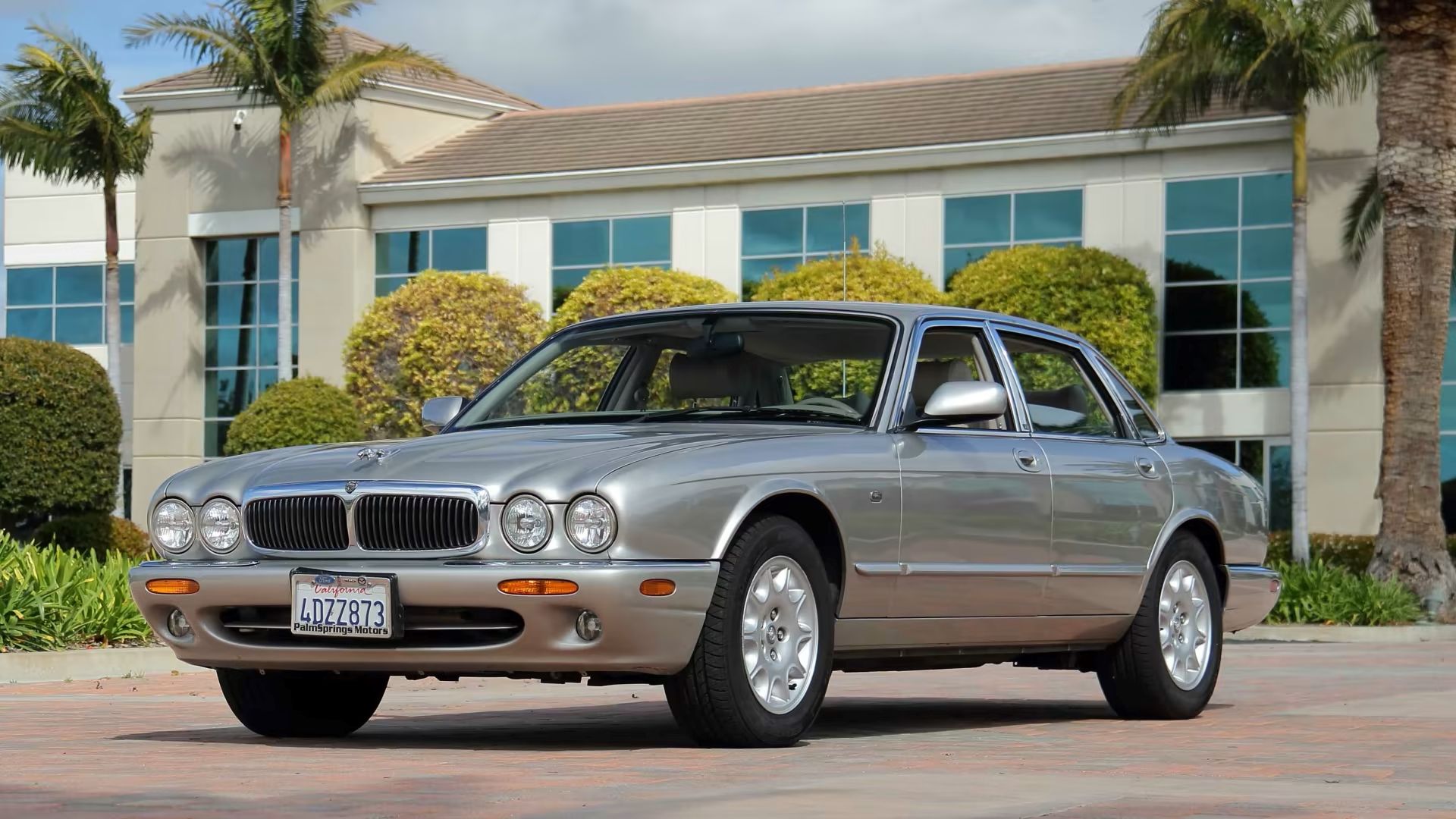
The AJ26 3.2 had a displacement of 3,253 cc and was designed with a bore of 3.39 inches and a stroke of 2.76 inches. This configuration allowed it to produce 240 horsepower and 233 lb-ft of torque, making it a strong performer for its size. The engine’s smaller displacement compared to the 4.0-liter model did not significantly reduce its power but provided a more compact option for certain applications.
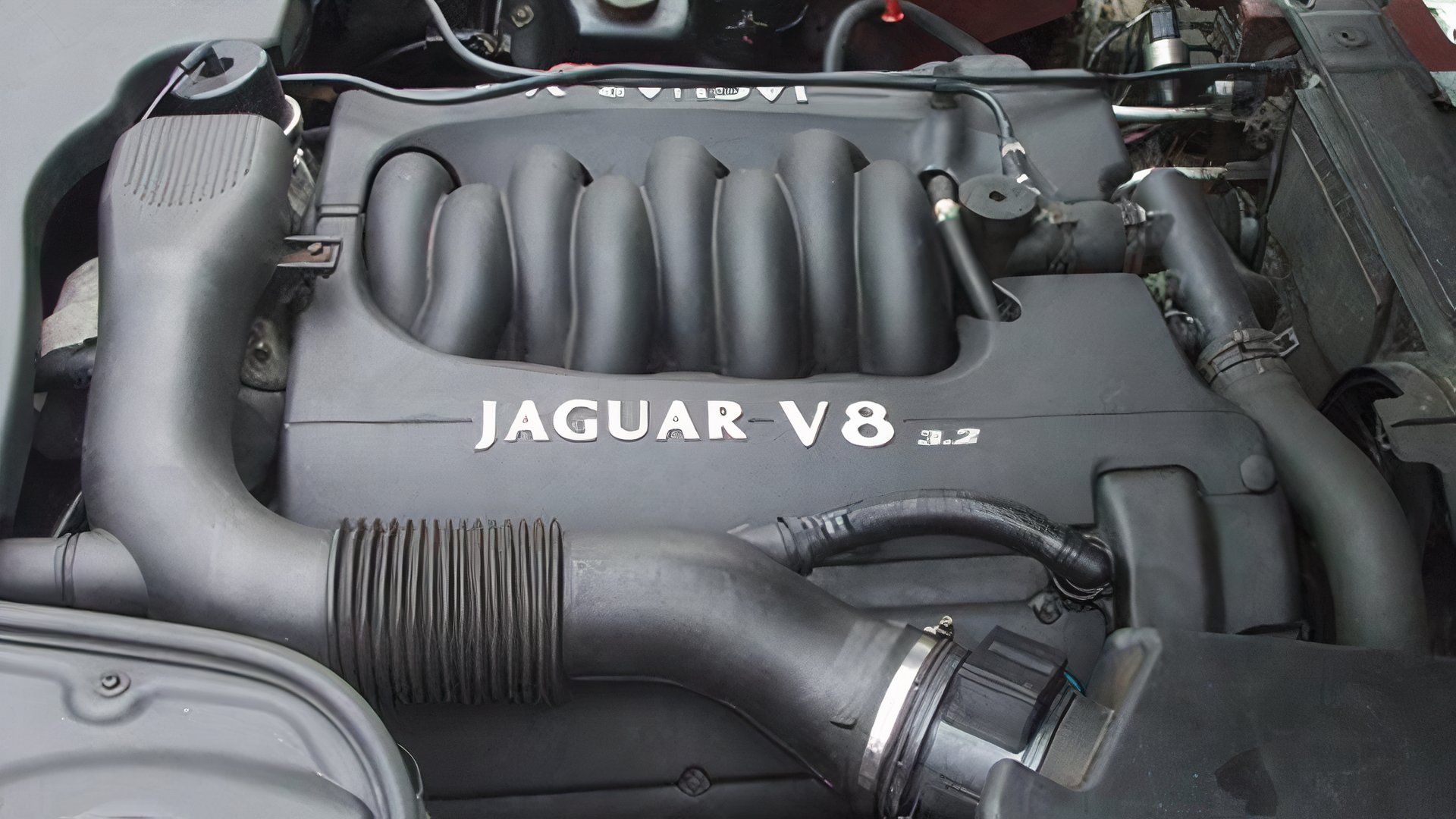
This engine series, which included both the 3.2 and 4.0-liter versions, was significant in Jaguar’s engine lineup and became a key part of their V8 offering. Interestingly, the AJ26 engine family was also utilized by other high-profile brands, including Aston Martin, where it powered the Vantage. This cross-brand usage highlighted the engine’s versatility and performance.
The 3.2-liter version was a deviation from the square bore and stroke dimensions of the 4.0-liter, reflecting a design choice aimed at optimizing performance and fitting specific vehicle requirements.
The AJ26 engine family was planned with the idea of having multiple sizes, as suggested by its name, which was said to represent the number of cylinders in other family members—12, 8, and 6. However, only the 8-cylinder version was produced, demonstrating Jaguar’s focus on developing a robust and reliable V8 engine.
The Jaguar AJ26 3.2 stands out as a compact yet powerful V8 engine that played a crucial role in Jaguar’s lineup and influenced other high-performance vehicles.
Its development marked a significant step in Jaguar’s engineering efforts, blending performance with practical engine design for the automotive market.
1. Daimler 2½ Liter V8: Compact Power with a Historic Legacy
The Daimler 2½ Liter V8 engine is a noteworthy part of automotive history, particularly for its role in the Daimler SP250 sports car. This engine, with a displacement of 2,548 cc, was introduced in the 1960s and was a significant offering from Daimler, especially as the company aimed to compete in the American market.
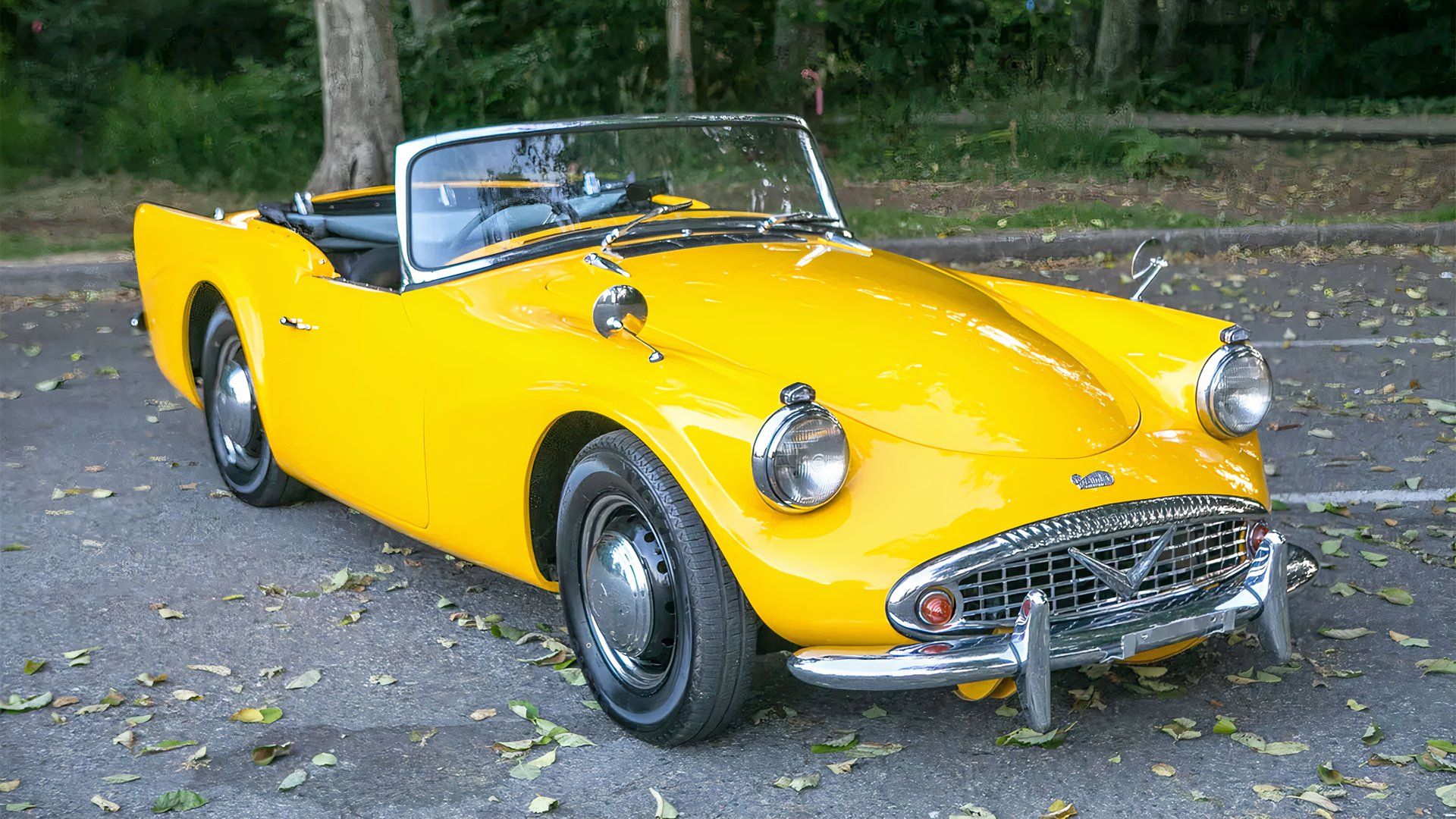
The Daimler SP250, the car that featured this engine, was initially intended to be named the Daimler Dart. However, Chrysler objected to the name, leading to its final designation. The SP250 was designed to compete with American sports cars like the Corvette and Studebaker Hawks, although it featured a smaller engine compared to its American rivals.
The 2.5-liter V8 engine had a bore of 3.0 inches and a stroke of 2.75 inches, producing 140 horsepower and 150 lb-ft of torque. This performance made it more powerful than the Jaguar 2.4-liter six-cylinder engine of the time, which was another key competitor.
Despite Daimler also having a larger 4.5-liter V8 engine available, it was not used in the SP250 due to the challenges of fitting it into the car. The smaller 2.5-liter V8 was a better fit, helping the SP250 achieve a balance of power and size. This engine was relatively compact, measuring just 30 inches in length, and it contributed to the car’s sporty performance and competitive edge.

In 1960, Jaguar acquired Daimler, and the 2½ Liter V8 continued to be used in Daimler cars until the brand was eventually phased out. The engine’s legacy lives on as a symbol of Daimler’s innovation and ambition during a time when the company was striving to make a mark in the competitive sports car market.
The Daimler 2½ Liter V8 is remembered for its contribution to a car designed to rival American sports cars, offering compact yet effective power. Its design and performance highlighted Daimler’s engineering capabilities and its efforts to establish a strong presence in the sports car segment.
